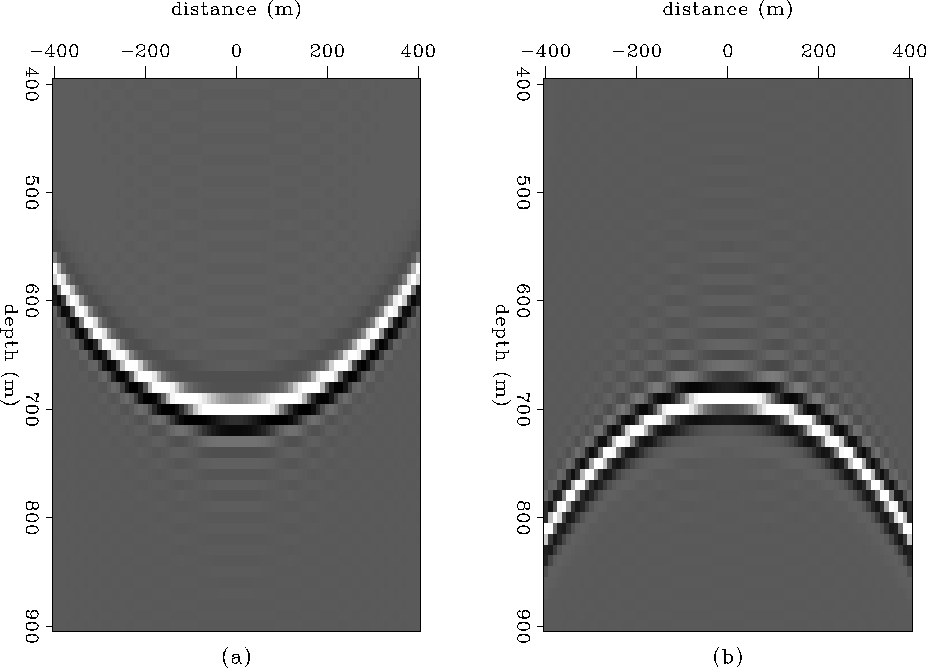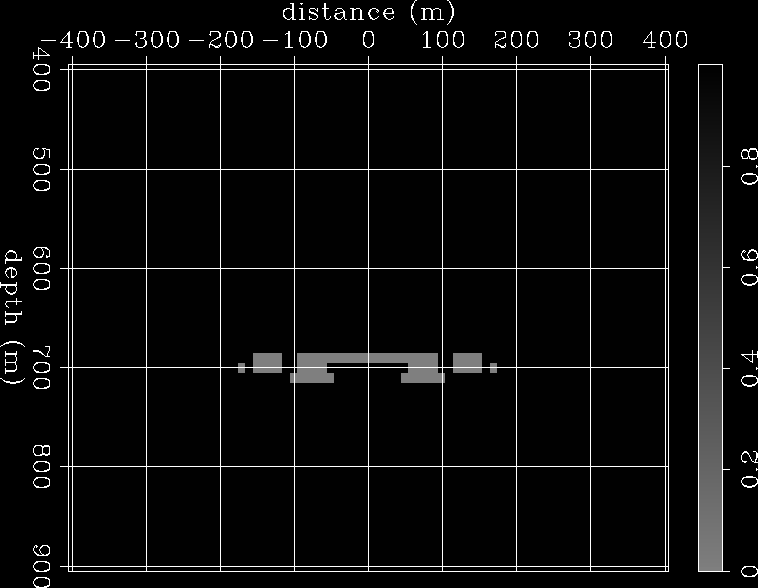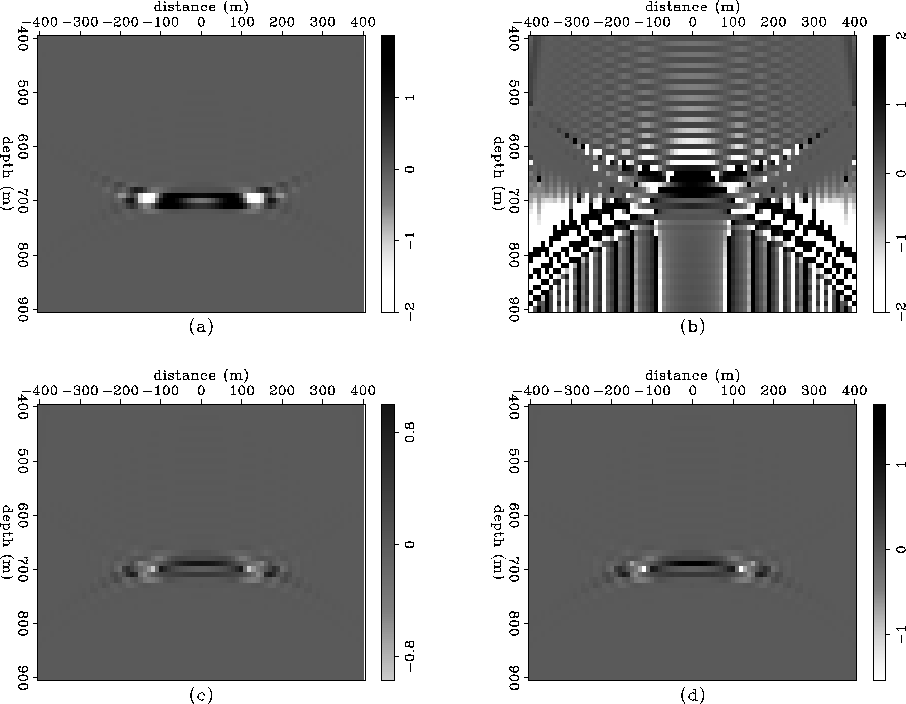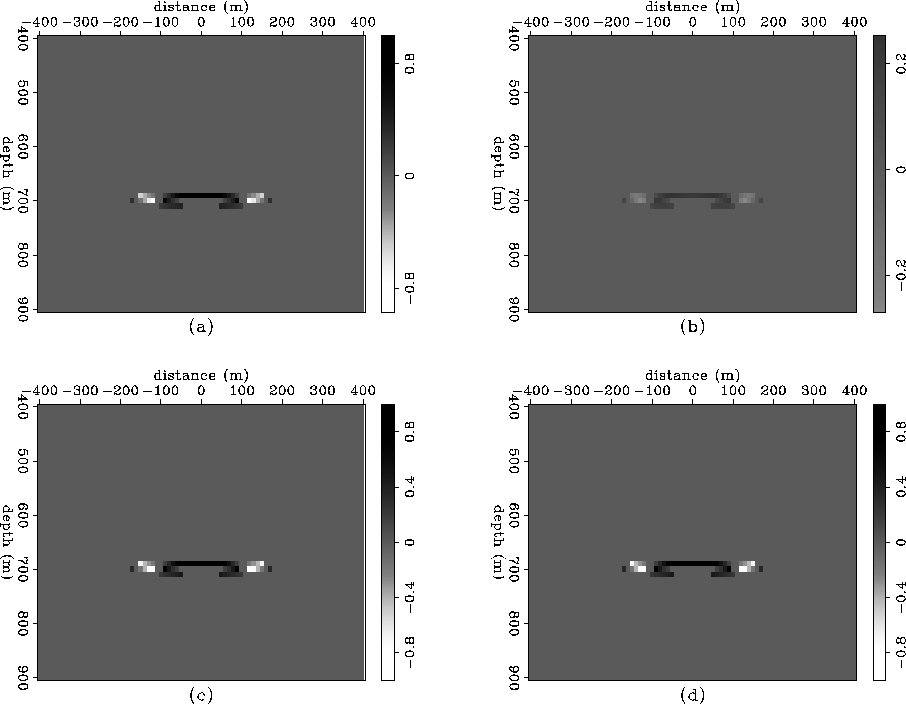| |
(7) |
| |
(8) |
We propose to add a mask function defined as
| |
(9) |
When ![]() has enough energy to contribute to the image, the damping factor
has enough energy to contribute to the image, the damping factor ![]() is set to zero. When factor
is set to zero. When factor ![]() is small, the damping factor is kept to avoid zero division.
Thus, the imaging condition can be set as
is small, the damping factor is kept to avoid zero division.
Thus, the imaging condition can be set as
| |
(10) |
A simple synthetic was generated to test the preceding idea using wave equation modeling. Figure 3a shows the downgoing wave, and Figure 3b the upgoing wave, at a fixed time. Figure 4 shows the mask ![]() used in this example.
used in this example.
 |
 |
Figure 5a shows the reflection strength calculated using the imaging condition stated in equation (7). Figure 5b shows the reflection strength calculated using division of the upgoing wavefield ![]() by the downgoing wavefield
by the downgoing wavefield ![]() . Figure 5c shows the reflection strength calculated using
the imaging condition stated in equation (8), and Figure 5d shows the reflection strength calculated using
the imaging condition stated in equation (10). The advantage of Figure 5d's result over the others is that it has the correct reflection strength value inside the masked area and doesn't diverge outside it because of the damping factor.
. Figure 5c shows the reflection strength calculated using
the imaging condition stated in equation (8), and Figure 5d shows the reflection strength calculated using
the imaging condition stated in equation (10). The advantage of Figure 5d's result over the others is that it has the correct reflection strength value inside the masked area and doesn't diverge outside it because of the damping factor.
 |
In Figure 6 we compare the two imaging conditions stated in equations (8) and (10) inside the masked area for two different ![]() . We can see for the imaging condition stated in equation (10) that the reflection strength inside the masked area doesn't change. This is an important advantage of space variable damping imaging principle, because it let us to build an adaptive mask dependent of the subsurface illumination.
. We can see for the imaging condition stated in equation (10) that the reflection strength inside the masked area doesn't change. This is an important advantage of space variable damping imaging principle, because it let us to build an adaptive mask dependent of the subsurface illumination.
 |
We stack the reflection strength from 11 shots to see how the change observed in one shot affects the final image. The result is shown in Figure 7. We can see imaging condition from equation (10) gives the best resolution.
 |